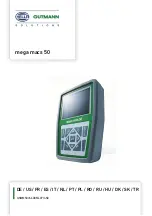
3 Product and Functional Description | 3.3 Optional Components and Accessories
ZEISS
Life sciences:
§
Mineral deposits in plant structures
§
Biological sections
§
Bone structures
The BSD detector is available either with one video output channel (BSD1) or with four video out-
put channels (BSD4). With BSD4 you can collect four channels in parallel, which can be displayed
in Quad mode. Each channel can have an arbitrary combination of segments. This way, you can
collect compositional images, topographical images, and custom combinations all at once.
Four channels are especially useful in combination with the program 3DSM, which provides a
topographical reconstruction of the specimen. The program 3DSM acquires four images of the
specimen and acquires each of these images with a different quadrant of the detector. This results
in four images from four different directions. With the BSD4 detector you can acquire these four
images all at once. An algorithm then calculates the topographic surface.
The BSD detector has a relatively large central hole and therefore has the advantage that it does
not limit the field of view of the SEM and does not influence the electron optical properties of the
objective lens. A disadvantage is that especially at low kV a lot of backscattered electrons are lost
in the central hole and cannot be detected. A solution for that is the aBSD detector.
Function
On the surface of the specimen, some of the primary electrons are backscattered. The backscat-
tered electrons then move towards the silicon segments of the BSD detector. If the energy of the
backscattered electrons is high enough, then the electrons pass through the very thin dead layer
of the diode and create electron-hole pairs in the silicon segments.
In each individual segment, the charge separation due to the electron-hole pairs is measured as a
current, which is used as a signal for image generation. Only electrons that have a high enough
energy can create electron-hole pairs and can contribute to image generation. Electrons that have
a lower energy (e.g. secondary electrons) are not detected by the BSD detector.
The emission of backscattered electrons from a specimen is related to the atomic number of the
involved material: Elements with high atomic numbers generate more backscattered electrons (i.e.
the backscatter coefficient is higher). When imaging, regions that contain elements with higher
atomic numbers appear brighter. Regions that contain elements with lower atomic numbers ap-
pear darker.
Since the detector has a limited speed, it is recommended to use scan speed 6 or higher (slower),
especially at small magnifications. The lower the gain is, the faster is the detector.
50
Instruction Manual ZEISS GeminiSEM series | en-US | Rev. 2 | 349500-8138-000
















































